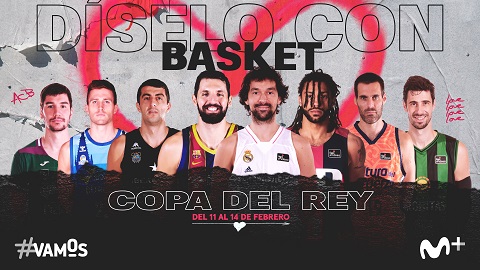Movistar held its first live 5G TV connection and broadcast of a sports event
4th May 2021
Movistar, a Telefonica brand, as the main sponsor of the Spanish basketball Copa del Rey, covered different basketball matches making use of a camera connected to the Movistar commercial 5G network. This is an avant-garde move for television broadcast. A professional camera was connected to the Movistar 5G commercial network and from there, to the production studios.
With the purpose of connecting the video camera to the Movistar+ production studios in Tres Cantos (Madrid), an ultra-portable HEVC (High Efficiency Video Coding, H.265) and H.264 mobile transmitter over bonded IP networks was used. More precisely, the chosen device was the AIR 320 5G equipment, manufactured by Aviwest, which is ideal for this purpose since it integrates a 5G modem and the video coding hardware needed. Once the camera stream arrived to the production studios via 5G and the backbone network, it was sent into a stream hub with the other camera inputs to complete the production setup.
5G’s uplink capabilities are crucial, given the huge bandwidth they offer compared to previous 4G networks (nowadays a 4G camera set-up usually combine 16 SIMs to reach the same bandwidth a single 5G connection can provide). These capabilities enable producers and broadcasters to stream more immediately, more flexibly and resulting in lower costs than before. Apart from that, the cameraman degree of freedom has seen an increase since they are able to move freely without any cables. The fact of being affordable conforms an advantage in the easiness and readiness of the deployment.
This deployment was based on a commercial Non-Standalone (NSA) 5G network using the 3.5 GHz (n78 band) frequency. The uplink capabilities of the configured link were between 100 and 150 Mbps, although only 20 Mbps were required for the HD contribution. The setup was composed by a wireless camera that was used for interviews and other outdoor inputs while another traditional and cabled system was used for the match itself. For this reason, synchronicity and latency was not a matter of concern on this case, as it is in a multiple-camera setup when it becomes crucial.
This initiative from Telefónica, that means a very interesting approach for the content production industry that will contribute to the continuous evolution of multimedia communications, it has been supported by the Spanish Ministry of Economic Affairs and Digital Transformation through Red.es platform.
5G-RECORDS’ use case 2, “Multiple camera wireless studio”, aims to take one step further on leveraging 5G capabilities for Multimedia production. More precisely, the second use case of the project will conform a completely wireless scenario with several cameras that require perfect synchronicity integrating remote production and 5G contribution, seeking to offer a complete setup based on a Standalone (SA) 5G network with the improvements that it brings compared to the NSA variant. A SA architecture will allow the project partners to use enhanced mobile broadband (eMBB), Ultra-Reliable and Low Latency Communications (URLLC), machine-type communications (mMTC) and advanced network slicing capabilities, implementing multi-gigabit data rates with improved efficiency and latency, and lower costs.
Even further, 5G-RECORDS’ use case 3, “Live immersive media”, will use mmWave 5G frequency bands that would allow hundreds of Mbps of upstream traffic avoiding any bandwidth constraint.
All in all, this is a clear demonstration of the capabilities that 5G offers to the Multimedia Industry and shows a glimpse of the future multimedia communications.

